News & Views – What is the Wellcare Economy?
Estimated reading time: 10 minutes
Listen to this week’s news above or read on!
Many people feel that technology is the cause of wellbeing issues, but we believe that it can be part of the solution and that smart home technologies in particular can be really beneficial in certain use cases.
Over the last year I have learned so much about wellbeing and tried to implement wellness practices in my life to help my family and I get through what has been a very difficult time. Identifying this need for support, particularly in our main customer base, we decided to build Kindspace, our Alexa voice skill that raises awareness of key wellbeing indicators and gives tips and advice of how to boost your mental and physical health.
In our society there is always a tendency to commercialise and commoditise when a need is identified. This can be good in some cases where it brings down the cost of products and services so that more people can afford them, but it also can be negative as some marketed solutions try to create a need that is not there or encourage people to overspend. So, I thought I’d focus on exploring this in some of the most recent news stories that we’ve come across this week.
In this week’s instalment, I’ll provide insight into:
- What is the Wellcare Economy?
- Wellbeing advice for parents and families.
- Advice for working from home.
- The influence of collective wellbeing on individual mental health.
- Person owned health and care data could be closer to becoming a reality.
- How a HUG is helping people with dementia.
- Are robotic pet companions as good as the real thing?
- How adopting daily rituals helps give life meaning.
- The science behind loneliness.
Last Week’s News & Views
Wellbeing
What are the emerging trends in health and wellbeing?
I came across this amazing graphic depicting the Wellcare Economy, it really intrigued me as it wasn’t a term that I had heard before. The illustration shows some of the growing trends in wellness including, femtech, digital mental health, supporting circadian rhythm and the microbiome as well as personalisation through sensor and visual feedback.
This link takes you to the illustration and also the accompanying paper which discusses these areas in more detail. It is clear that the latest trends, particularly in “Petrenthood” are also being driven by changes to our lifestyle during the covid-19 pandemic.

The Nourish app is transforming the wellbeing of parents and their families
Nourish is a mental health and wellbeing app created by mothers for mothers. The team at Nourish have a range of expertise ranging from life coaching, psychology, psychiatry, yoga, mindfulness, essential oils, personal training and nutrition. The platform includes specially created content in audio, video and quick read format which helps to support mothers through the different stages of becoming a parent.
Sara Campin, Founder & CEO at Nourish, says: “I created Nourish after my own personal struggles with mental health and wellbeing in motherhood – not only as a new mum, but also in juggling the stresses and strains of work and mothering. Learning the art of self-care transformed my life as a mum and the wellbeing and happiness of my kids”.
It is clear how passionate Sara is about empowering women to manage their wellbeing and to help families thrive. The app has been featured in the Apple store as the app of the day and has fantastic reviews. It’s also super affordable at only £2.99/month or £45 for a lifetime membership. Starting your journey into parenthood is tough and even more so now since covid-19. I love the sense of community that the Nourish team has created. It’s definitely the kind of thing that would have been really helpful when we went through a late miscarriage and then going on to have our son and daughter. Our son was a terrible sleeper and I really struggled to cope with motherhood. I felt guilty about how I felt after what we had been through with our first pregnancy. I felt like I was failing and found it difficult to ask for help.
You can read more about the story and mission of Nourish here.
Thrive at Home – Homeworkers Toolkit
Do you find it hard working from home? The Thrive at Home toolkit might come in handy! The toolkit is an online resource designed to help people working from home by offering valuable wellbeing advice and mental health support. The toolkit has five key areas including enablers of health (keeping in contact with loved ones), mental health (highlighting the benefits of a routine and activities like practicing gratitude and journaling), musculoskeletal health (how to work safely with display screen equipment), lifestyle (ideas to help keep you physically active) and external risks to health (which covers possible financial issues and tips).
You can access the toolkit and all the curated resources and links to help you here. I particularly liked the covid-19 care card.

Did you know collective wellbeing can have a big influence on your mental health?
Mental health is frequently seen as a personal problem that requires treatment of the individual. However, evidence is growing that shows our own wellbeing is heavily influenced by the groups we are part of.
The World Economic Forum is looking at implementing better measures to understand wellbeing in organisations and workplaces. With the hope being that this data could improve both collective and individual mental health. The work will help to identify what helps groups thrive, as well as the factors which boost wellbeing and feelings of social connectedness.
You can read more about how collective mental health affects individual mental health here.
Tech
What if you could manage all your health and care records?
The Digital Health and Care Innovation Centre (DHI) Design Team, along with Mydex CIC and Dr. Jamie Hogg from NHS Grampian have worked on developing a place where medical and care data can be stored. The vision is for this to be a personal repository that can be taken to, and connects with, any health or care service. The project is aptly named “Backpack”. Trials are underway with people living with Multiple Sclerosis (MS) to see if the data can help them to access more personalised health, care and support services that are centred around their wishes and needs.
You can read more about the “Backpack” project here.
How a HUG is helping people with dementia
HUG™ produce a sensory device that helps soothe and reduce anxiety in people with dementia. The design is a beautiful cuddly long armed monkey like creature, which is specially weighted to feel like a real hug. The doll can also incorporate sounds to enhance the pleasure and comfort during use. A feature on BBC’s The One Show, “How a hug from this special doll can help with dementia” showed an 87% increase in wellbeing through the use of HUG™ over a 6-month period.
HUG™ were the winners of last year’s Abilitynet Tech4Good People’s Award. This is the same competition that TL Tech were finalists in for the Digital Volunteer category. You can read more about HUG™’s winning story here.
Petrenthood – is a companion robot as good as the real thing?
Petrenthood is a growing trend. However, for many getting a real pet is not a viable option. There are lots of wellbeing benefits to owning a pet, so the idea of a robot that could provide companionship is interesting, but are they as good as the real thing? My dog is really good at picking up on our emotions and loves to comfort us when we are sad or hurt. She is especially protective of the kids in our household.
This article from the Engineering & Technology (E&T) magazine explores some of the latest tech and research into Emotional Artificial Intelligence (AI). These new technologies being developed can act as both a physical and emotional companion.
There are a whole range of technologies being incorporated into these robotic friends, including things like cameras, microphones, speakers, touch sensors, accelerometers and environmental sensors (temperature, humidity, light levels, etc). While the tech is impressive, this comes at a cost which most people would struggle to afford. Perhaps a better solution would be to borrow a pet from a service like Borrow My Doggie.
Loneliness
It was loneliness awareness week this week. There were so many great articles and initiatives that I struggled to choose which ones to share with you here. I have gone for my two favourite, one that shows that it really is the little things that make a difference and another piece looking at how our brains work and why they can be so affected by loneliness.
The Power of Small Rituals
Undertaking regular rituals gives life a sense of purpose and helps to alleviate loneliness. These rituals can be acts as small as how you like to make your bed in the morning or the way you stir your tea or coffee. There is comfort in repetition and completing a task. Having things the way that you want or prefer is also very comforting. These sorts of activities also give your brain space as you can perform the actions almost without thought. Next time you are doing a simple task, appreciate how it feels to be in that present moment. Being thankful for the simple things in life can produce a significant wellbeing boost. You can even look for activities that you haven’t previously given much thought to and turn them into a ritual. This time to focus on your self-care could include how you wash your face or brush your hair or even tie your shoelaces.
You can read more in the article that inspired me here.
The science behind loneliness
Evidence shows us that loneliness is linked to poor health, but what is the science behind it?
Long-term lack of social contact has been shown in several studies to have a harmful influence on our minds and bodies, increasing the risk of certain diseases. Loneliness puts us at increased risk of premature death, whereas being socially connected protects us and minimises our risk.
This article explains some research into a particular part of our brain which is affected by loneliness, the dorsal raphe nucleus (DRN). You can think of this as a neural switch that controls the desire for social interaction and that it can become supressed or stimulated.
The research by Dr. Gillian Matthews shows that social contact isn’t just nice to have – it’s fundamental to how our brains are programmed and we are driven to seek out companionship.
Another study conducted by MIT neuroscientist Livia Tomova further explains the harmful effects of long-term solitude. “If you are in a state of prolonged stress, the same adaptations that are in the first place healthy and necessary, will actually become detrimental because they’re not designed to be long term states”.
Key Takeaways
As an entrepreneur building a wellbeing support service that sits in the Wellcare Economy, it is difficult not to feel uncomfortable at the huge commercialisation in the sector, some of which is designed to prey on people’s feelings. There is a huge choice of wellbeing apps out there, competition is very tough, but one good thing is that this can help to reduce the cost to the consumer. If you are looking for new self-care ideas our Kindspace voice application is free and provides lots of tips and signposting to other services, products and activities, many of which are free also. If you have an Alexa smart speaker, all you need to do to get started is say “Alexa, open Kindspace”.
I’m going to be taking a break from blogging over the summer. The kids have seven weeks off and we are going to Shetland to see family. You can stay up to date on our adventures by connecting with me on LinkedIn. I hope you also have a splendid summer and get to enjoy the nice weather and company of friends and family.
If you are catching up on news you can also read last week’s News and Views post on loneliness, resilience and wellbeing here.
If you liked this post, subscribe to our mailing list to be notified when we have new posts and support material available. We also often share exclusive additional content here, including updates on the business and life in general. Emails typically go out once every two weeks, so we promise that we won’t overload your inbox!



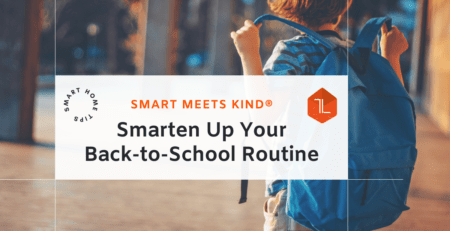
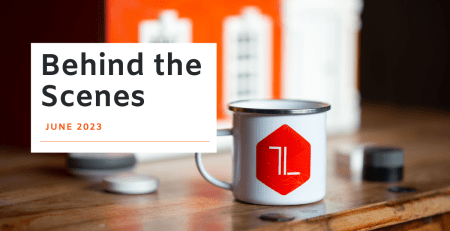

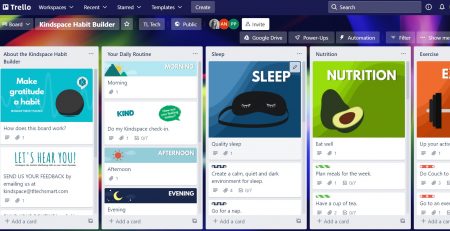

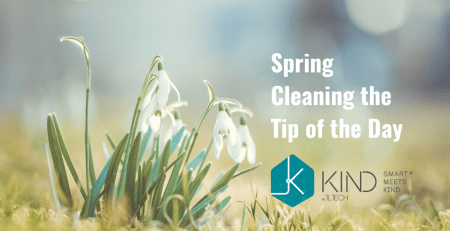
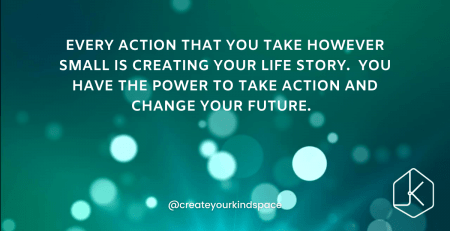
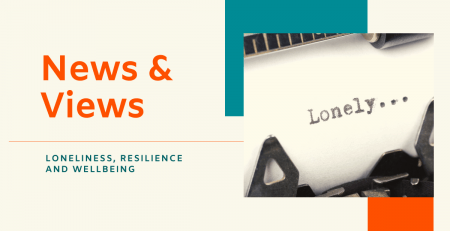

Comments (4)
Very impressive and detailed article shared. I really enjoyed it because it is very informative and interesting thanks for share with us.
Thanks so much for the kind feedback.
Caroline
Interesting post, thanks for sharing.
I’m so glad that you liked it.
Caroline